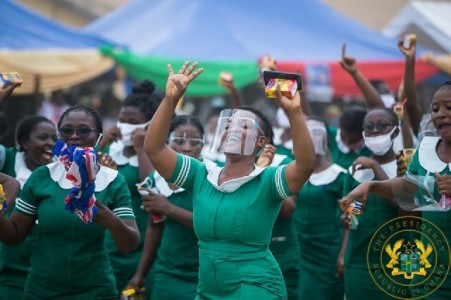Ashanti Region Tops Hypertension Case In Ghana

The Ashanti Regional Health Directorate is worried over the growing prevalence of cases of hypertension recorded in the region.
The region topped the Ghana Health Service’s data repository in 2021, with over 121,000 out of the 612,000 hypertensive cases recorded across Ghana.
The 2014 Ghana Demographic Health Survey reveals hypertension awareness is low in Ghana, with more women knowing their high blood pressure levels than men.
According to the District Health Information Management System, hypertension was the second leading cause of hospital admissions in the Ashanti region.
Regional health director, Dr. Emmanuel Tinkorang, attributes the growing statistics to sedentary lifestyle.
“In Africa, there is an increasing prevalence of these non-communicable diseases because of lifestyle changes. Previously people were going to farms, but now they are resorting to vehicles. They are also living sedentary and eating all sorts of food.
“As result, people begin to suffer from Metabolic Syndrome and this is wreaking havoc in this country,” he said.
The Ghana Health Service in collaboration with the Healthy Heart Africa program has instituted a community-based campaign team across the districts in the region.
The 13-member team has been mandated to visit communities to create awareness in a bid to alleviate the number of non-communicable diseases.
A data collected reveals over 252,000 people in the Ashanti region have elevated blood pressure levels with some 53,000 people diagnosed with hypertension.
Senior Technical Advisor for PATH Ghana, Dr. Robert Yeboah
“Healthy Heart essentially is an access programme looking at improving the quality of care for hypertensive patients. Our work revolves around training for health workers, providing health facilities with the necessary equipment for screening and diagnosis.
“We also maximize opportunities within our facilities to create more awareness about hypertension,” he said.
Nearly 30% of African adults are estimated to have high blood pressure.
The figure is however expected to skyrocket to 150 million among adults in Sub-Saharan Africa by 2025.
source:Delali Kukey




